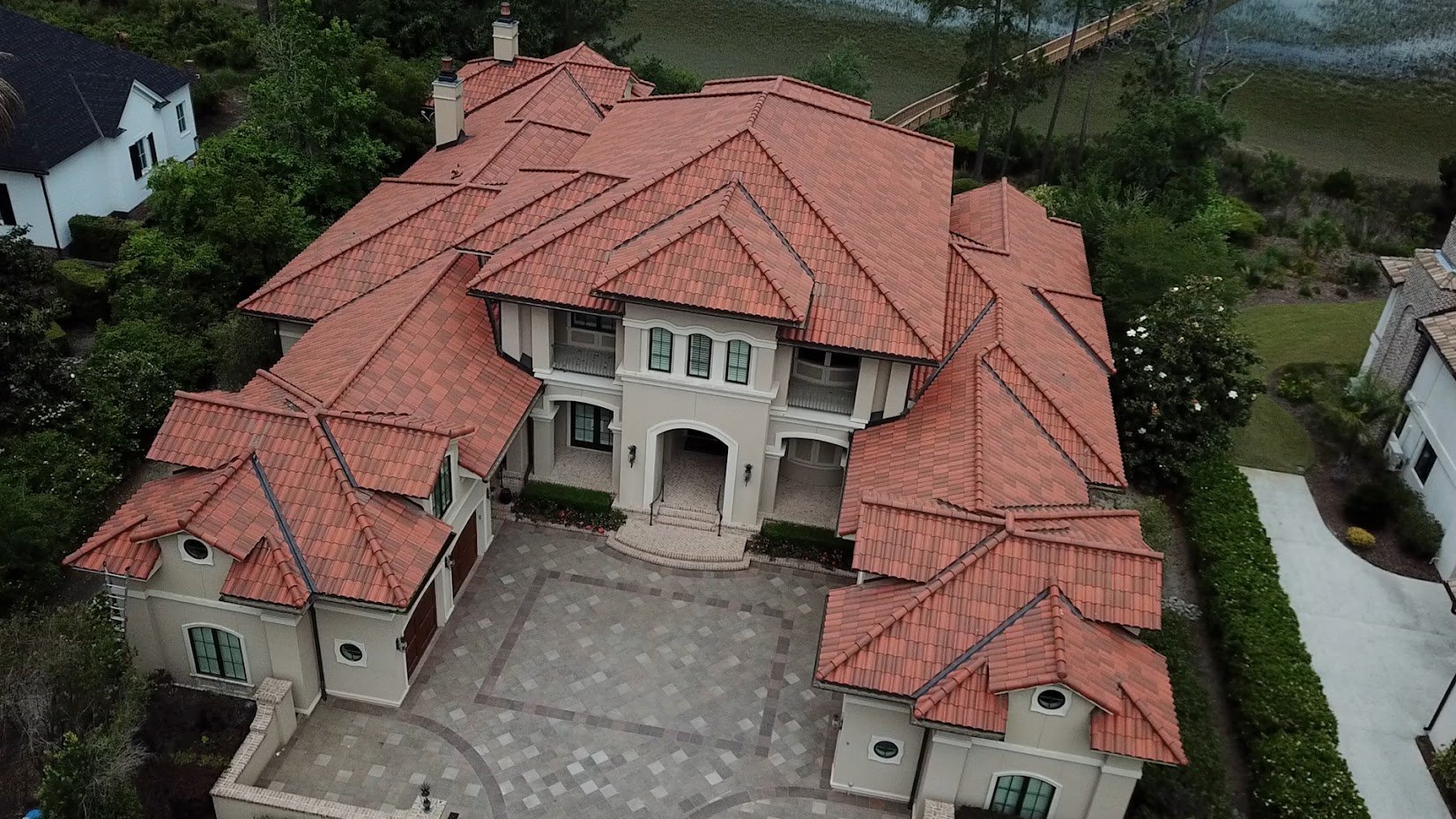
As a homeowner, you're often faced with numerous decisions, including the pitch of your roof. While many don't often think of pitch, it not only affects the architectural aesthetics of the house- but also plays a significant role in the roof's longevity and overall performance.
RoofCrafters has repaired and replaced both steep and shallow-pitched roofing systems for nearly three decades. While each home is unique in its own way, the pitch you have means a few things for your home, including how long it's intended to last.
In this comprehensive guide, we'll delve into the specifics of steep-pitched roofs versus shallow-pitched roofs, exploring the factors that influence their durability and assisting homeowners in making an informed decision for their homes. By the time you finish reading, you'll have a pretty good idea of what they mean and how each type will benefit you. Ready to begin?
Defining Roof Pitch
Roof pitch refers to the steepness or angle of a roof. It is essentially the slope or incline of the roof's surface, determined by the vertical rise of the roof in relation to its horizontal span. This measurement is expressed as a ratio of two numbers, indicating the amount of vertical rise (in inches or feet) for every horizontal foot of the roof's span. For instance, a roof with a 4:12 pitch means that for every 12 inches of horizontal distance, the roof's height rises by 4 inches.
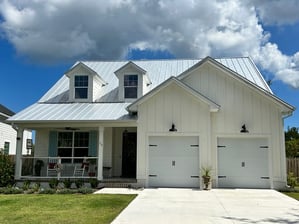
The roof pitch is a critical factor in determining various aspects of a roofing system, including its aesthetic appearance, functionality, and the materials suitable for installation. It plays a significant role in shedding water, snow, and debris away from the roof surface, influencing drainage and overall weather resistance. Roofs with steeper pitches tend to shed water more efficiently, minimizing the risk of water pooling or leaks compared to flatter roofs.
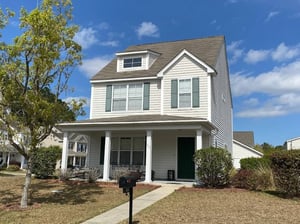
Different roof pitches are suitable for different climates and architectural styles. For regions with heavy rainfall or snow, a steeper pitch is preferred to facilitate quick water runoff and snow shedding, preventing potential structural damage and leaks. In contrast, areas with milder climates might accommodate lower pitches since they don't require as much emphasis on water shedding.
Understanding Pitch: Steep vs. Shallow
So, what's there to know about the differences between steep and shallow-pitched roofs? You may be surprised to know there's plenty to cover, and we hope you learn something new!
Steep-Pitched Roofs: Steep-pitched roofs, also known as high-pitched or steep-slope roofs, have a slope angle that typically exceeds 6:12 (meaning for every twelve horizontal units, the rise is six vertical units.) These roofs are easily recognizable by their sharp incline, which adds a dramatic architectural element to homes.
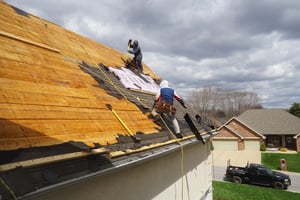
Shallow-Pitched Roofs: Shallow-pitched roofs, also referred to as low-pitched or low-slope roofs, have a gentler slope angle that is less than 6:12. These roofs have a more gradual incline and are commonly seen on contemporary or modern architectural styles.
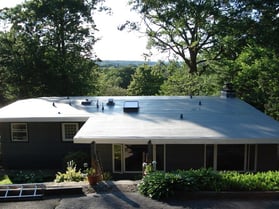
Longevity Factors for Steep-Pitched Roofs
Material Selection: Steep-pitched roofs often have a longer lifespan due to the materials used. Materials like asphalt shingles, metal, clay tiles, or concrete tiles are commonly used on steep roofs, and many of these materials are designed to withstand harsh weather conditions and have more extended warranties.
Water Shedding: Steep-pitched roofs excel at shedding water and preventing moisture buildup. This quality is crucial in preventing leaks, water damage, and the growth of mold or mildew, which can compromise the roof's structural integrity.
Less Debris Accumulation: The steeper slope of these roofs makes it more challenging for debris, such as leaves, branches, and snow, to accumulate. This can reduce the risk of clogs and potential water damage.
Longevity Factors for Shallow-Pitched Roofs
Materials and Coatings: Shallow-pitched roofs often require specialized materials and coatings that are specifically designed for low-slope applications. These materials have reflective properties to reduce heat absorption and prolong the roof's lifespan.
Maintenance and Drainage: Proper drainage is critical for shallow-pitched roofs. Regular maintenance to keep drains, gutters, and scuppers clear of debris is essential to prevent water ponding, which can accelerate the deterioration of the roofing material.
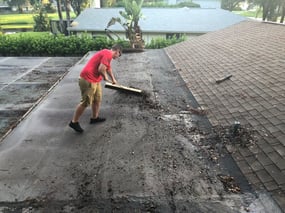
Weather Resistance: While some materials used for shallow roofs are engineered to be weather-resistant, they may have a shorter lifespan compared to those used on steep roofs. Extreme weather conditions, hefty snow, and ice can pose challenges for shallow roofs.
Consider Your Climate
Steep-Pitched Roofs: Steep-pitched roofs are better suited for regions with heavy rainfall, snowfall or areas prone to hurricanes. The steep slope helps shed water, snow, and debris efficiently, reducing the risk of water accumulation and damage.
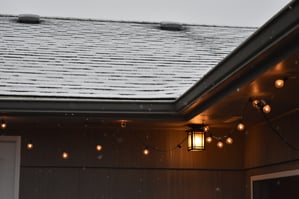
Shallow-Pitched Roofs: Shallow-pitched roofs are more often seen in areas with drier climates or where rainfall is less frequent. They can provide adequate protection in regions with mild weather while offering a contemporary design.
Maintenance and Repairs
Steep-Pitched Roofs: Steep roofs generally require less frequent maintenance due to their ability to shed water and debris effectively. Inspections and repairs are recommended to address any signs of damage promptly.
Shallow-Pitched Roofs: Shallow roofs demand regular maintenance to prevent water ponding, clogs, and other issues associated with poor drainage. Vigilant maintenance can help extend the roof's lifespan.
The longevity of steep-pitched roofs versus shallow-pitched roofs depends on various factors, including materials, climate, maintenance, and architectural design. Steep-pitched roofs often have an advantage due to their ability to shed water and debris efficiently, which helps prevent moisture-related issues. While suitable for certain climates and designs, shallow-pitched roofs require specialized materials and diligent maintenance to ensure their durability.
Are You Ready for a New Roof?
You're now a roof pitch expert- congrats! Know that ultimately, the decision between steep and shallow-pitched roofs should be based on your home's location, your preferred architectural style, and your budget for materials and maintenance. Consultation with a roofing professional can provide valuable insights tailored to your specific needs, ensuring that your roofing choice aligns with your long-term goals for a secure, durable, and visually appealing home. By considering these factors carefully, you'll be able to choose an option that suits both your aesthetic preferences and the practical demands of your living environment!
Keep in mind (this is arguably the most important thing to remember) that it's crucial to find the right roofer if you're looking to replace your current roof. Not all roofers want the best for you- so it's vital to do a thorough dive into your options. If you need more clarification on a decision, do your research and take as much time as you need! If you live in one of our service areas, help is right around the corner. When you're ready, visit our contact page to connect with one of our friendly RoofCrafters representatives. We're prepared to take on your commercial roofing project!
My name is Kevin Mills, and I am the lead estimator for RoofCrafters’ Tampa division. I’m originally from Michigan, and I enjoy hunting, fishing, and spending any free time outdoors. What I’m most passionate about, though, is helping business owners and homeowners alike achieve their roofing goals, all while providing a seamless customer journey.




